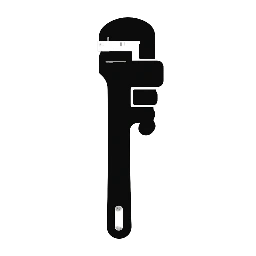A garbage disposal is a kitchen superhero, making food waste disappear with the flip of a switch. But for many homeowners, that superhero often turns into a villain, spewing back food scraps and creating frustrating clogs. The secret to a long, clog-free life for your disposal often lies not just in how you use it, but how it was installed.
A professional, meticulous installation can prevent a myriad of future headaches. Whether you’re a DIY enthusiast or preparing for a professional installation, understanding the nuances of proper setup is crucial. This in-depth guide will walk you through the essential steps and expert tips to ensure your garbage disposal operates smoothly and efficiently, keeping those pesky clogs at bay.
Why Proper Installation is Your First Line of Defense Against Clogs
You might think a disposal is just “plug and play,” but that’s far from the truth. Several key elements during installation directly impact its long-term performance and clog prevention:
- Correct Drainage Slope: If the drain pipes leading from the disposal aren’t angled correctly, water and food particles can sit and accumulate, leading to blockages.
- Proper P-Trap Placement: The P-trap is designed to hold water, creating a seal against sewer gases. If it’s too high, too low, or incorrectly aligned with the disposal’s drain outlet, it can impede flow.
- Secure Connections: Leaks are not just messy; they can lead to rust, corrosion, and compromise the structural integrity of your plumbing, exacerbating clog issues over time.
- Air Gap Integration (for dishwashers): An air gap prevents dirty dishwasher water from backflowing into your clean water supply and ensures proper drainage. Without it, or if incorrectly installed, your disposal can struggle to clear waste.
- Right Sizing for Your Sink: While less about installation technique, ensuring the disposal’s opening fits perfectly with your sink’s drain hole prevents future issues and ensures a secure seal.
Tools and Materials You’ll Need (or Your Plumber Will Use)
Before starting, gather your supplies:
- New garbage disposal unit
- Plumber’s putty
- Phillips and flathead screwdrivers
- Adjustable wrench or disposal wrench
- Pliers
- Bucket and towels (for water spills)
- Flashlight
- Safety glasses
- Tape measure
- Optional: Pipe cutters, PVC primer and cement (if modifying drain lines)
Step-by-Step Guide to a Clog-Preventing Installation
Here’s a detailed breakdown of the installation process, emphasizing clog-prevention tips:
Step 1: Disconnect the Old Unit (if applicable) and Prepare the Area
- Turn Off Power! Locate your home’s main electrical panel and switch off the circuit breaker for your kitchen or the specific outlet powering the disposal. This is non-negotiable for safety.
- Turn Off Water Supply: Turn off the hot and cold water valves under the sink.
- Clear the Cabinet: Remove everything from under the sink to give yourself ample working space.
- Place a Bucket: Position a bucket directly under the old disposal to catch any residual water when you disconnect it.
- Disconnect Drainage: Use pliers or an adjustable wrench to loosen the slip nuts connecting the disposal to the P-trap and dishwasher drain (if applicable).
- Remove Old Disposal: If your old disposal has a three-bolt mounting system, insert the disposal wrench into one of the mounting ears and rotate it counter-clockwise until the unit drops. For newer twist-lock models, twist the unit until it disengages. Carefully lower the unit into the bucket.
- Clean the Sink Flange: Remove the old sink flange, putty, and any debris from the sink drain opening. Scrape thoroughly to ensure a clean, smooth surface for the new seal.
Step 2: Install the New Sink Flange and Mounting Assembly
This is where the clog-prevention really begins at the source.
- Apply Plumber’s Putty: Roll a generous rope of plumber’s putty (about 1/2 inch thick) and wrap it around the underside rim of the new sink flange.
- Insert Flange: Press the flange firmly into the sink drain opening from above. Wipe away any excess putty that squeezes out immediately.
- Install Mounting Ring: From underneath the sink, slide the fiber gasket, backup flange, and mounting ring onto the sink flange.
- Secure Mounting Screws: While holding the assembly firmly, tighten the three mounting screws evenly with a screwdriver. Crucial Tip: Tighten them incrementally and alternately (like lug nuts on a tire) to ensure even pressure and a watertight seal. An uneven seal can lead to drips and eventual damage, exacerbating potential clogs.
Step 3: Prepare the Disposal for Drainage & Dishwasher Connection
- Remove Dishwasher Knockout Plug: If you plan to connect a dishwasher, use a hammer and a flathead screwdriver to carefully knock out the dishwasher inlet plug from inside the disposal’s dishwasher port. Failure to do this will cause immediate water backup when the dishwasher runs.
- Attach Discharge Tube: Connect the disposal’s discharge tube (the pipe where waste exits) to the unit using the provided gasket and bolts. Ensure the gasket is seated correctly for a leak-free seal.
Step 4: Mount the Disposal Unit
- Align with Mounting Ring: Lift the disposal unit and align the three mounting tabs on the top of the disposal with the corresponding tabs on the mounting ring you installed earlier.
- Twist to Lock: Rotate the disposal unit clockwise until it locks securely into place. You might need to use the disposal wrench for the final turn. The unit should feel stable and firmly attached.
Step 5: Connect Drainage Pipes (The Clog Prevention Zone!)
This is arguably the most critical step for preventing future clogs.
- Align the P-Trap: The P-trap should connect directly to the disposal’s discharge tube. Crucial Tip for Clog Prevention: Ensure the disposal’s discharge opening is positioned above the P-trap’s inlet. This provides a downward slope, allowing gravity to assist in draining waste efficiently. If the P-trap is too high, it creates a “belly” where water and food particles can collect.
- Proper Slope: When connecting the P-trap to the wall drain pipe, ensure a slight downward slope (about 1/4 inch per foot) from the disposal to the wall. This consistent slope prevents water from pooling and allows food particles to be carried away effectively.
- Secure Connections: Use slip nuts and washers to firmly connect all drain pipes. Hand-tighten first, then give an extra quarter-turn with pliers. Avoid over-tightening, which can crack plastic pipes.
- Connect Dishwasher Drain (if applicable): Slide the dishwasher drain hose onto the disposal’s inlet port (where you removed the knockout plug) and secure it with a hose clamp.
Step 6: Electrical Connection
- Connect Wiring: If hardwired, connect the disposal’s wires (usually black to black, white to white, green or bare copper to ground) to your home’s electrical wiring, following the manufacturer’s instructions. Use wire nuts to secure connections. If it’s a plug-in model, simply plug it into the dedicated outlet.
- Secure Wiring: Neatly tuck and secure wiring to prevent it from dangling or interfering with other components.
Step 7: Test for Leaks and Proper Operation
- Slow Fill Test: Turn on the water supply slowly and let the sink fill with a few inches of water. Check all connections for any drips or leaks. Tighten connections as needed.
- Drain Test: Pull the stopper and let the water drain through the disposal. Watch for any leaks.
- Power On and Run: Turn the power back on at the circuit breaker. With a small amount of water running, turn on the disposal. Listen for smooth operation.
- Ice Cube Test (Optional but Recommended): Grind a few ice cubes. This helps to clean the grinding chamber and sharpen the impellers, ensuring efficient future grinding.
Common Installation Mistakes That Lead to Clogs
- Forgetting to Remove the Dishwasher Knockout Plug: The most common mistake leading to immediate dishwasher backup.
- Incorrect P-Trap Height: If the P-trap is too high relative to the disposal’s discharge, water and food waste will sit in the disposal, leading to odors and clogs.
- Insufficient Drain Pipe Slope: A flat or even upward-sloping drain line creates standing water, allowing food particles to settle and accumulate.
- Loose Connections: Causes leaks, which can lead to water damage and eventually compromised pipe integrity.
- Not Using Plumber’s Putty (or not enough): Leads to leaks around the sink flange.
- Over-tightening Connections: Can crack plastic pipes or strip threads.
Beyond Installation: Daily Habits for a Clog-Free Disposal
Even with perfect installation, your daily habits play a huge role in preventing clogs:
- Use Cold Water: Always run cold water before, during, and for about 15-30 seconds after grinding food. Cold water solidifies grease, allowing it to be ground and flushed away, rather than coating pipes.
- Grind Small Batches: Don’t overload the disposal. Feed food waste slowly.
- Avoid “No-No” Items: Absolutely avoid coffee grounds, eggshells, pasta, rice, potato peels, fibrous vegetables (celery, corn husks), fruit pits, bones, grease, and oil. These are prime clog culprits.
- Regular Cleaning: Grind a cup of ice cubes occasionally, followed by half a cup of baking soda and white vinegar to freshen and clean the grinding chamber.
- Citrus Peels: Grinding small pieces of citrus peels helps to freshen the disposal’s smell.
By paying close attention to these installation details and maintaining good habits, you can ensure your garbage disposal remains a helpful kitchen appliance, keeping your drains clear and your kitchen running smoothly for years to come. If in doubt, always consult a licensed plumber for professional installation.


Leave a Reply